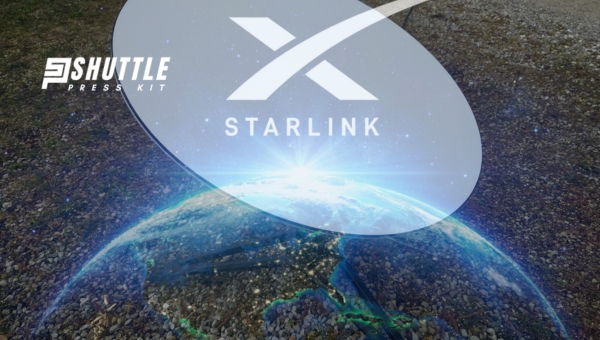In the grand digital cosmos of today is a novel technology making waves – Starlink DNS. But why bother comprehending it? Simply put, it positively alters your online experience in extraordinary ways that are scarcely imaginable!
This article will provide crucial insights into what Starlink DNS is all about and the advantages it brings. Rest assured, each snippet of information efficiently aids in deepening your grasp on this groundbreaking aspect.
Answering “Starlink DNS: Setup And Benefits” requires delving into its core. Starlink DNS is a unique network service provided by Starlink to make your internet usage more efficient.
By setting up Starlink DNS on your device, you essentially optimize speed and bolster security measures, ultimately upgrading your overall online navigation experience.
Top 5 Considerations OF Best DNS for Starlink
Choosing the right Domain Name System (DNS) is crucial for optimizing your Starlink internet experience. The DNS you select can impact everything from browsing speed to the security of your online activities.

Here are five primary considerations to keep in mind when selecting a DNS server for your Starlink connection:
- Community Support and Engagement: Look for a DNS with an active developer community. Regular updates, bug fixes, and feature enhancements from a committed group can significantly enhance performance and reliability.
- User Base Size: A larger user base suggests a trusted and well-performing DNS server. High usage statistics typically indicate better stability and faster response times.
- Security Features: Prioritize DNS servers that offer advanced protection against cyber threats like phishing, malware, and malicious websites. This adds an extra layer of online safety.
- Handling of Network Congestion: Choose a DNS provider known for efficiently managing high traffic volumes without compromising on speed or experiencing significant downtimes. This aspect is vital for maintaining uninterrupted internet access.
- Static IP Address Availability: If you have specific requirements that necessitate a stable connection (such as hosting servers or online gaming), consider whether the DNS service offers static IP addresses to accommodate these needs.
Selecting the best DNS involves balancing these factors according to your priorities—whether it’s improved speed, enhanced security, or reliable performance under heavy loads. Experiment with different services to find which one aligns best with your usage patterns and expectations from Starlink’s satellite internet service.
Also Read: Starlink Network Troubles? Here’s How to Fix Them!
Major Benefits of Using a Starlink DNS
Using Starlink DNS comes with significant benefits that enhance your internet experience.

It ensures faster loading times, better security while surfing online, and improves how you find your way on the web. Let’s dive deeper into these key advantages.
Speed and Efficiency
One of the main advantages of using Starlink DNS is the increased speed and efficiency it provides. When you use Starlink, the time it takes for your computer to translate website names into addresses is much reduced. This means that websites load faster, making your browsing experience smoother and more enjoyable.
Furthermore, Starlink uses advanced satellite technology which helps maintain a steady connection even in remote areas or where traditional broadband services struggle to reach.
This consistent speed and reliability are crucial for both personal use, like streaming videos without interruption, and professional settings where lag can lead to lost productivity.
Security Enhancements
Starlink DNS also offers significant security enhancements. By routing your internet traffic through a securely managed DNS server, it effectively shields you from various cyber threats including phishing attacks or malware intrusions that can compromise your data privacy.
Additionally, updates to improve security features are regularly implemented within Starlink’s network infrastructure without impacting user connectivity speed. These proactive measures ensure users not only have fast but secure internet access at all times—a crucial benefit in today’s digital age where online safety cannot be overlooked.
Navigational Benefits
Lastly, another compelling benefit of using Starlink DNS is navigational improvements when browsing the web. Advanced algorithms are dedicated to optimizing routing paths based on real-time conditions like traffic congestion or server response times across millisecond scales rather than seconds offered by conventional systems.
These instantaneous adjustments ensure that the path taken by your data requests always finds the quickest route possible to its destination leading to significantly improved stability in maintaining consistent upload/download rates as well as reducing latency overall—a particularly valuable property for activities demanding real-time responses such as competitive gaming or live video communications.
How to Set Up the Best DNS for Starlink?
Setting up the optimal Domain Name System (DNS) for your Starlink internet connection is essential to maximize online performance and security.

The right DNS can speed up your internet browsing, improve security, and even provide content filtering options. Here’s a detailed step-by-step process:
- Step 1: Choose the Most Suitable DNS Option: Begin by evaluating different DNS providers based on their performance, security features, and reliability. Considerations should include how well a DNS service can protect against online threats like phishing attacks and whether it supports features like content filtering or parental controls. Also, assess if the provider has a strong infrastructure to ensure low latency and high-speed access to websites.
- Step 2: Access Your Router’s Configuration Page: To change the DNS settings, you’ll need access to your router’s configuration interface. This is usually accomplished by entering the router’s IP address into a web browser’s URL bar. Common IP addresses include
192.168.0.1or192.168.1.1. You may need to refer to your router’s manual or perform an internet search with its model number for specific instructions. - Step 3: Locate the DNS Settings: Once logged into your router’s admin panel, navigate through its menus until you find settings labeled as “DNS,” “Network Settings,” or something similar. The exact naming can vary depending on your router’s brand and firmware version.
- Step 4: Enter the Chosen DNS Server Addresses: In the designated spots within these settings, input the primary and secondary IP addresses of your chosen DNS server(s). These addresses act as guides for your connection in translating domain names (like google.com) into IP addresses that computers use to communicate with each other.
- Step 5: Save Changes and Reboot if Necessary: After entering new DNS servers’ details, make sure you save changes using an ‘Apply’, ‘Save’, or equivalent button in your router’s interface. Embedding this setting will often necessitate either restarting routers themselves once it successfully stores configurations, or immediate implementation of active reconnections to enhance the given.
This streamlined adjustment not only leverages improved capabilities from selected DNS services but also customizes performance according to user-specific needs.
Also Read: How To Activate Starlink Bypass Mode Quickly & Easily?
Pros & Cons
| Pros | Cons |
|---|---|
| Faster internet speeds | Higher initial setup cost |
| Improved security measures | Possible service interruptions |
| Better navigation and connectivity | Dependency on satellite visibility |
| Global coverage, accessible remotely | Affected by weather conditions |
FAQs
Can I customize my Starlink’s connection settings?
Yes, you can customize settings through the Starlink app or web interface to optimize your internet experience.
What devices can be connected to a bug-fixed network?
Any device that supports WiFi, such as smartphones, laptops, tablets, and smart TVs, can connect to a bug-fixed Starlink network.
How does reducing latency improve my internet usage?
Lower latency enhances your online activities by reducing delays in data transmission, and improving streaming, gaming, and video conferencing.
Is there any downtime expected during the setup of Starlink DNS?
There might be minimal downtime as you switch DNS settings, but typically this is brief and not disruptive.
Can I use the Starlink DNS with other internet services?
Starlink DNS is specifically designed to optimize your connection with the Starlink satellite internet service and may not be compatible with other services.
Also Read: How to Fix Starlink Disconnected Error? – Quick Solutions
Conclusion
Understanding and using Starlink DNS can significantly improve your internet experience. By setting up Starlink DNS, users benefit from enhanced speed, security, and navigational ease.
This modern satellite-based service offers an innovative alternative to traditional internet providers, making it a viable option for those in remote or underserved areas.
The setup process is straightforward, and the advantages are clear when compared with other options. With its focus on cutting-edge technology and customer satisfaction, Starlink DNS is not just another internet service but a step towards future-proofing your digital connectivity.
